Here below a card from the seaport town Liepāja. On the card is also indicated the German name Libau. The russian name is ЛИБАВА (LIBAVA).
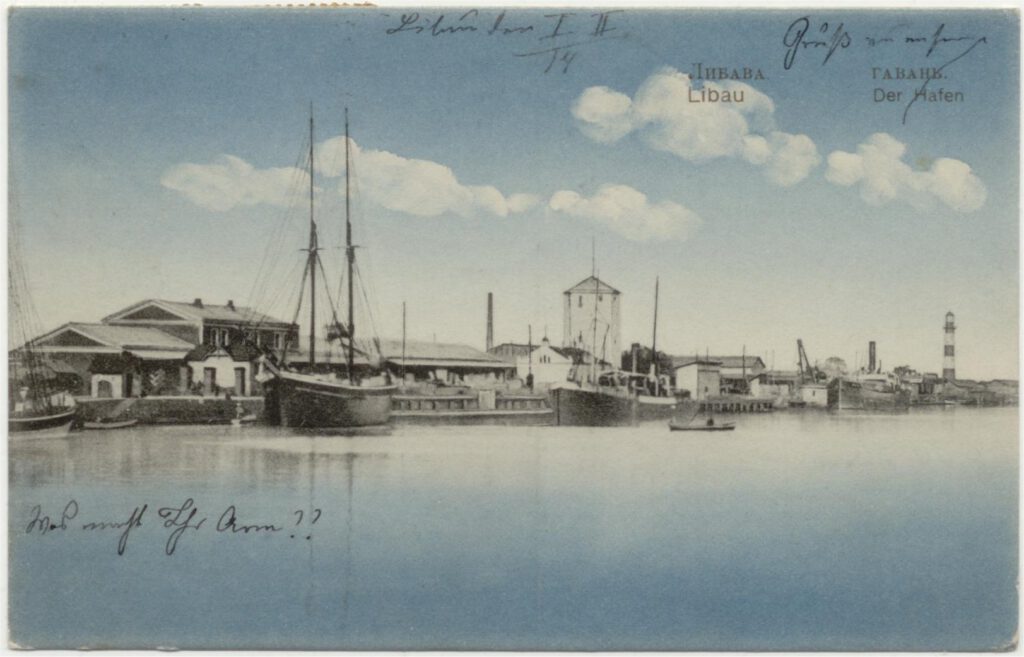
On the address-side: the double-ring postmark. In the postmark is indicated the Russian name ЛИБАВА (LIBAVA).
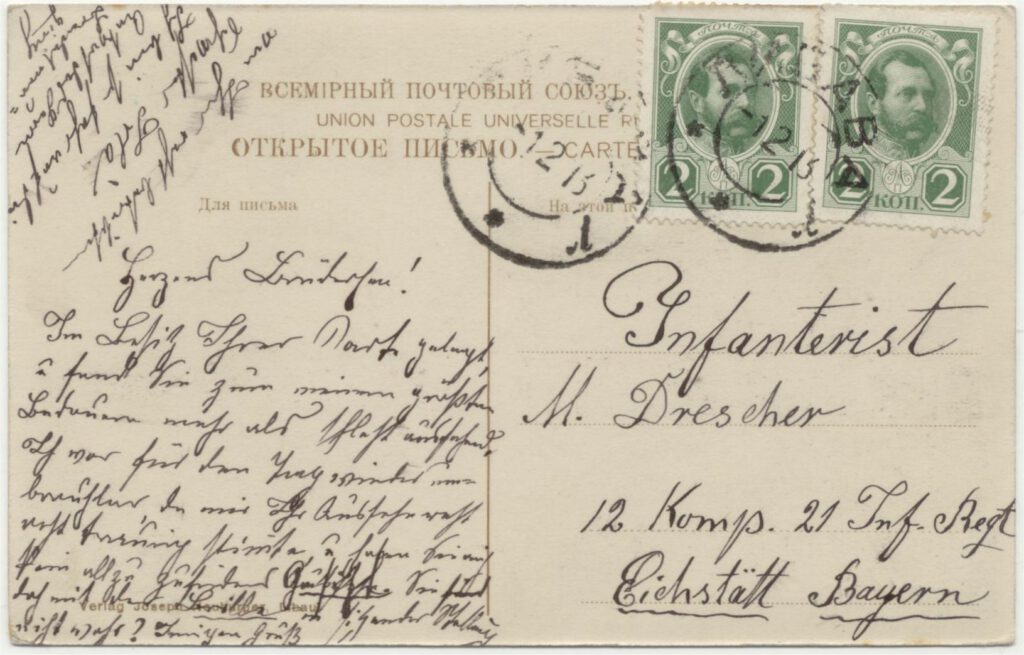
Literature about the postal history of Liepāja in Imperial Russia:
Post uit Liepāja, Libau, Либава [Libava] 1 / Jan Kaptein. – In: Het Baltische Gebied 2014 ; 65. – p. 28-42
[About: Post from Liepāja, Libau, Либава [Libava] part 1 Imperial Russia, article in Dutch language]
Liepāja on the map
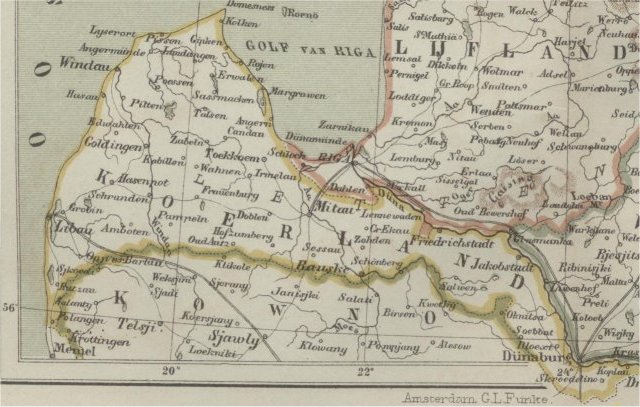
Postmarks

With the introduction of postage stamps -1 January 1858- also the necessity of cancellation comes into existence. In the beginning postmarks of the former period were still used for the date on the backside of the cover in combination with ‘cancelling’ by a written cross in black ink. Of course this was not efficient and the cancellation could be removes for re-using the postage stamp until the introduction of number-cancellations.
On May , 1858, the number-cancellations were introduced for whole Russia. Circular no. 157, August 17, 1858, gives more details. For the district-post offices, range under the government offices, a second kind of these number-cancellations was used: a number in an rectangle of points.
Либава [Libava] was a district-postoffice and get number 239.
In the EESTI-classification: type 2.
The Hofmann handbook lists the standard postmarks of Liepaja. The first postmarks with the date in three lines: a postmark with ornament below and without serial number (type 1), a postmark with ornament below and serial number 2 (type 2), a postmark with serial number 3 and at the bottom the government (type 3).
The latter postmark exists in two versions: serial number small and serial number large. Below a card with serial number 3, government at the bottom: type 3.
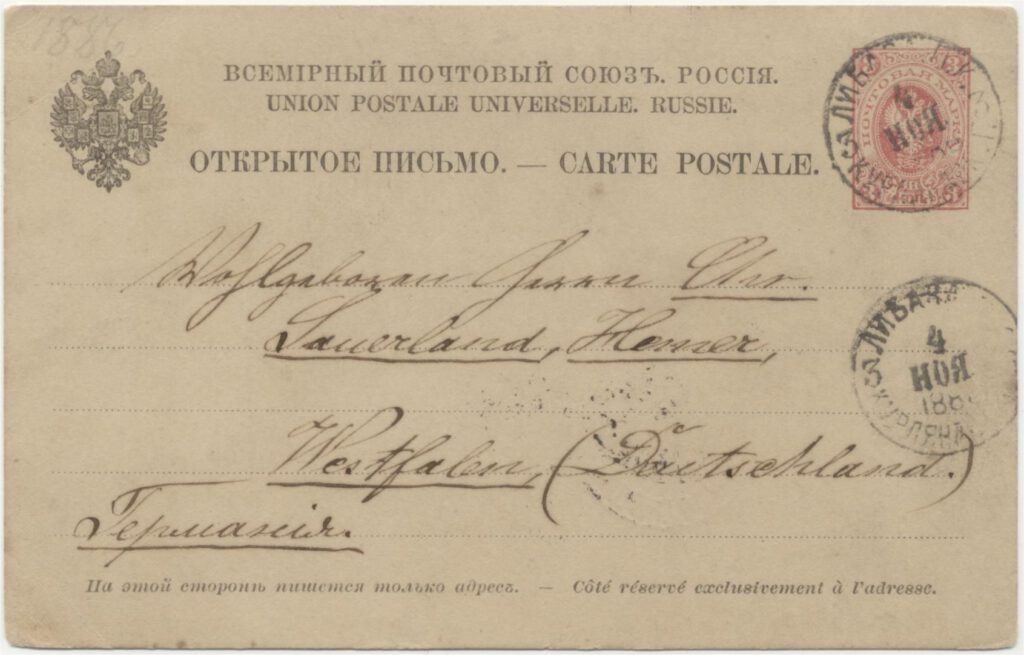
On this card an old type postmark of ЛИБАВА (LIBAVA). These single-ring postmarks have the date in three lines. Here НОЯ, short for НОЯБР (NOYABR), November 4, 1886. At the top the place name, under it the month in cyrillic letters, underneath that the year. Great cities had at the bottom an ornament, but in smaller places the name of government came in the place of the ornament: here we see unclear КУ… (KU…..), short for КУРЛЯНДСКАЯ (KURLYANDSKAYA) ГУБЕРНIЯ (GUBERNIYA), Courland Government.
Another card.
Here below a card with -in my opinion the same- postmark, but more clear. After placename ЛИБАВА (LIBAVA) is also indicated П. К, ПОЧТОВАЯ КОНТОРА (POCHTOVAYA KONTORA), (main) post office.
The date is 4 МАР (MAR), March 1888.
In the classification of the EESTI-handbook this postmark with gubernia below is type 5.
Subdivision: type 5A (without numbers at sides) and -as here- type 5B (single circle with numbers at sides). There is a further subdivision of 5B:
5B1: П.К.(this postmark)
5B2: П.О.
5B3: П.С.
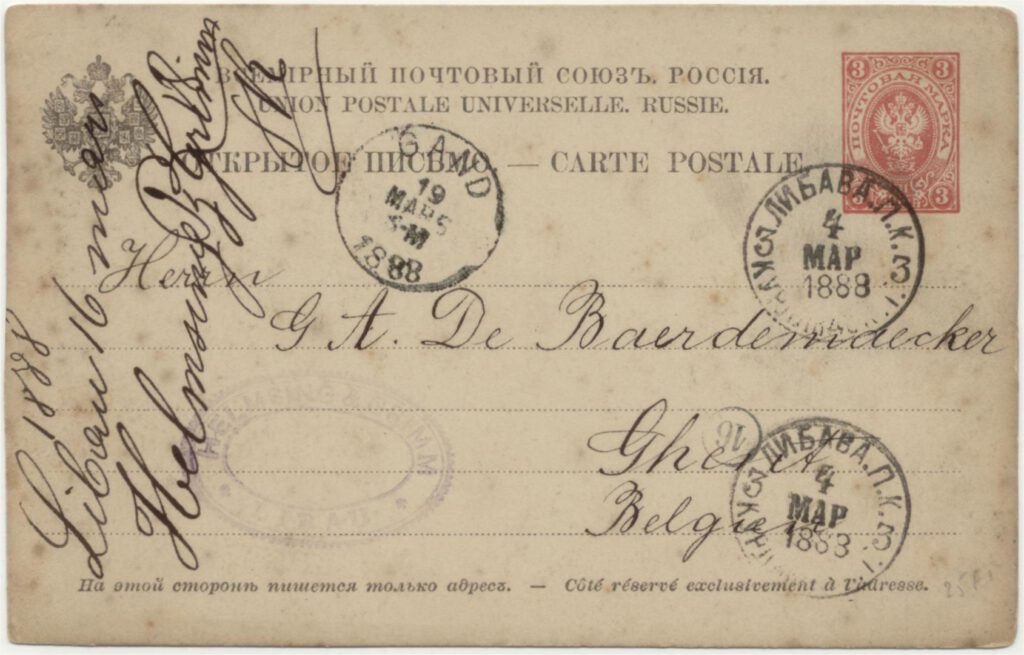

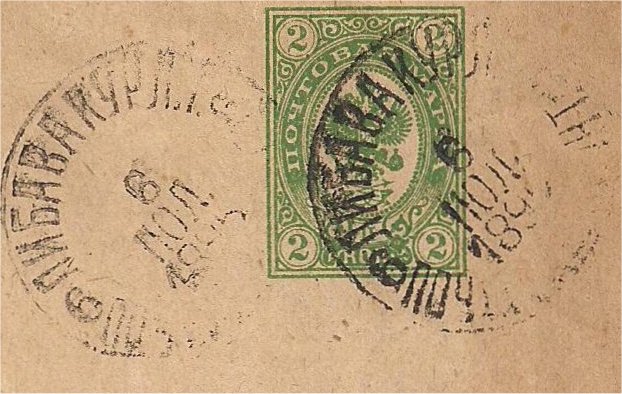
This postmark has date in three lines, month in letters, with gubernia: type 6A.
In the subdivion of type 6A this is type 6A1: indication ПОЧТ. ТЕЛЕГР. КОНТ. , the abbrevation for ПОЧТОВО-ТЕЛЕГРАФНАЯ КОНТОРА (POCHTOVO-TELEGRAFNAYA KONTORA = Post-Telegraph Office)
A new type one-ring: crossed-date postmarks
In circular 13 of 5 April 1890 the instruction arrived to use Roman numerals for new stamps. This happened on suggestion of the U.P.U., the Universal Postal Union.
Also the postmarks in Russia change in the ‘crossed date’-type. In the middle the day stays first, under it the month (in Roman numerals), left of the whole the century and right the rest of the year: see here below.

Postcard with ‘crossed-date’-postmark: also is indicated КУРЛ Г. (KURL G.), short for КУРЛЯНДСКАЯ (KURLYANDSKAYA) ГУБЕРНIЯ (GUBERNIYA), Courland Government.
In the EESTI-classification type 6C (with gubernia) and 6D (without gubernia), are the ‘crossed-date’-types. So here type 6C.
In this postmark at the bottom the indication for type 6C1: ПОЧТ. ТЕЛ. КОНТ. , the abbrevation for ПОЧТОВО-ТЕЛЕГРАФНАЯ КОНТОРА (POCHTOVO-TELEGRAFNAYA KONTORA = Post-Telegraph Office)
This postmark with index mark 1 is, according the handbook of Harry v. Hofmann used from December 10, 1899 upto December 5, 1902.
There is also used a crossed date postmark, same type, with the same index mark 1, but something different in the indication of the government: КУРЛЯНДСК [KURLYANDSK.].
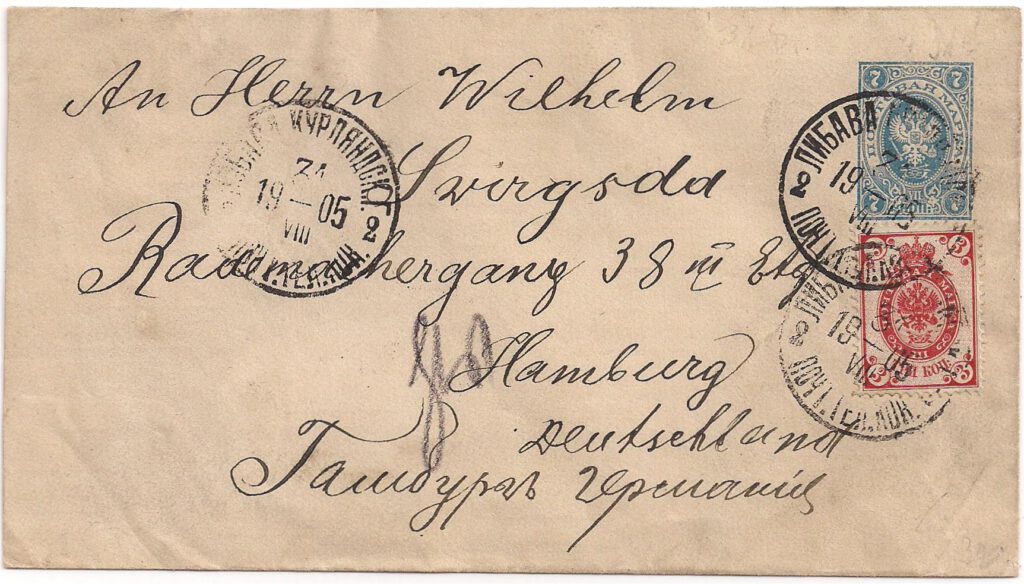
The postmark of this cover to Hamburg is of the same type as above – type 6C1- crossed-date, with gubernia above and post office indication ПОЧТ. ТЕЛ. КОНТ. , the abbrevation for ПОЧТОВО-ТЕЛЕГРАФНАЯ КОНТОРА (POCHTOVO-TELEGRAFNAYA KONTORA = Post-Telegraph Office).
The serial number is 2 and the gubernia is indicated with КУРЛЯНДСК [KURLYANDSK.].
This postmark with index mark 2 is, according the handbook of Harry v. Hofmann is reported in two variants: diameter 27 mm and 28 mm (this one).
There is also used a crossed date postmark, same type, with the same index mark 2, but something different in the indication of the government is something shorter: ПОЧТ. ТЕЛ [KURL.].
Double circle postmarks

Here a clear double-ring postmark of ЛИБАВА (LIBAVA).
In the EESTI-classification the double circle postmarks: type 7. In the subdivion this postmark is type 7B (without gubernia) and in the further subdivision type 7B1 (with serials * * a etc.)

From 1903 double-ring-postmarks are used: circular nr. 9 of 3 February 1903 introduced the double-ring-postmarks. The old postmarks are replaced when they are worn out. Also a detailed description is given of the new postmarks.
The postmarks consist of two rings, with the name of place in between. Day-month-year now stood on one line (in the year “19” has been omitted. There came two sorts of postmarks: bigger for the mail and smaller for receipts.

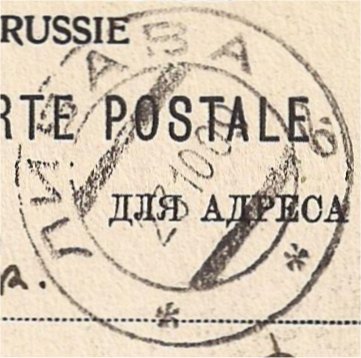
This postmark – on the backside of the card more clear-, with the second letter of the Russian alphabet as serial-letter, has a thick date bridge. In the handbook of Harry v. Hofmann there are two types double circle postmarks: date bridge thin or thick.
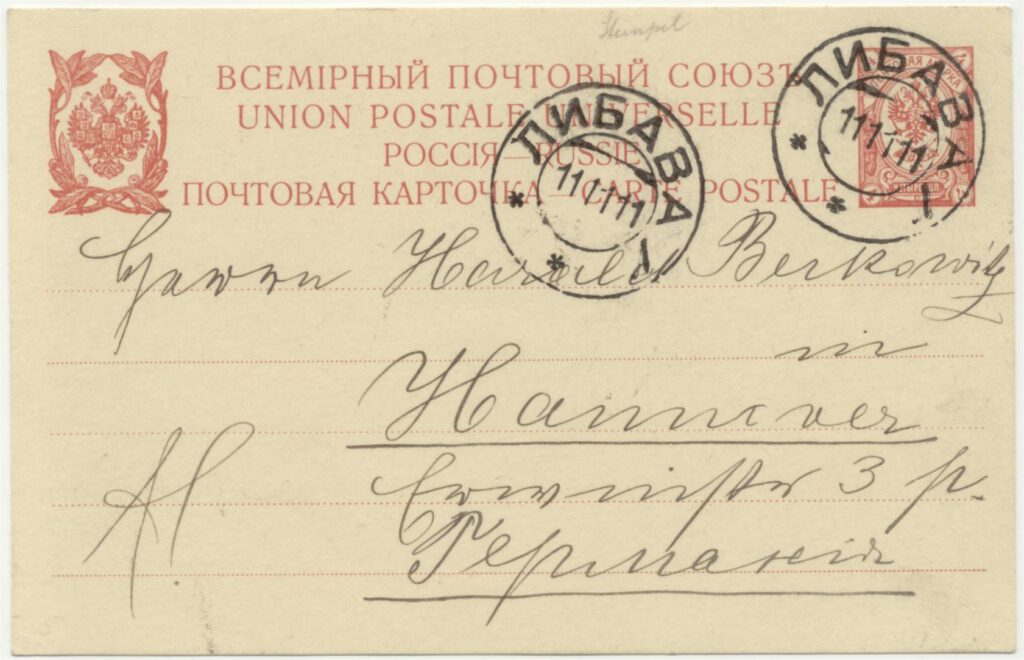

Here below: the picture-side of this card: a street in Libau. The card is sent to САЛАНТЫ КОВ. [SALANTY KOV.], so in the government Kovno. The place is located in the north-western part of present Lithuania and the Lithuanian name is now Salantai. The Polish name is Salanty.
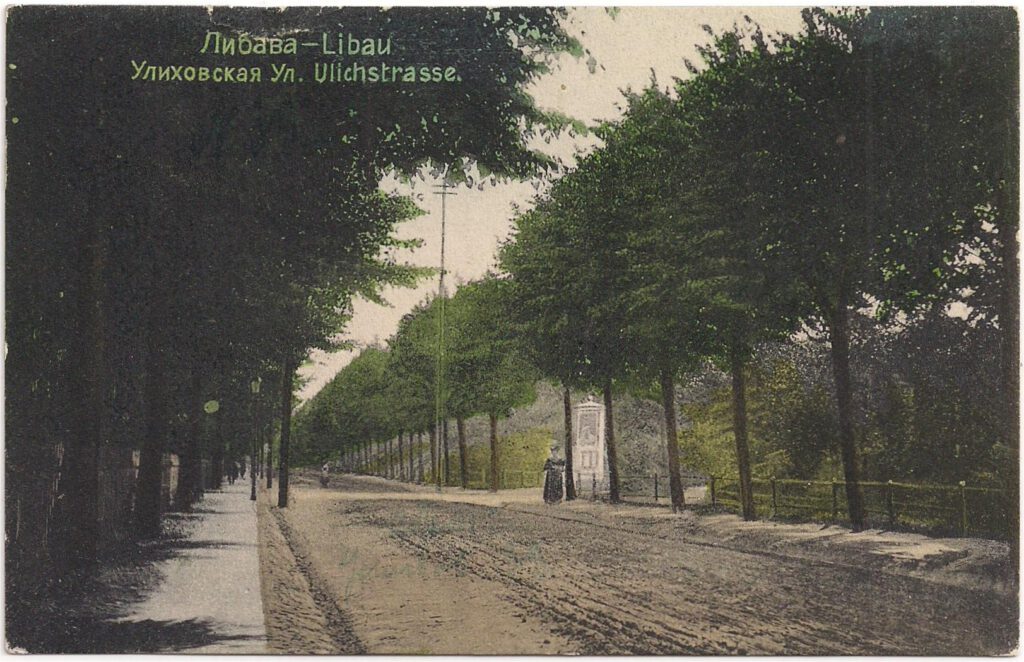
ЛИБАВА [LIBAVA] was also a bathing-place. Here below a picture card ‘Grusse aus Libau’, Greetings from Libau, with the ‘Herren-kaltbad’, the gentlemen-cold-bath.
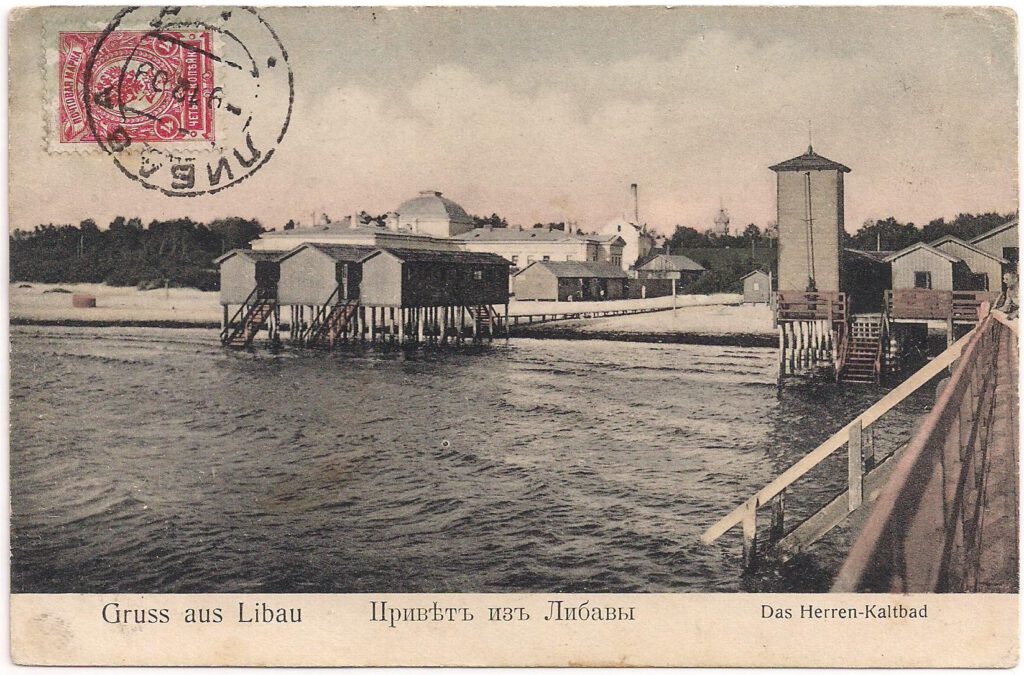
The greetings from Libau go to Brünn, the present Brno in the Czech Republic.
The address-side, with a more clear postmark of ЛИБАВА [LIBAVA] and a stamp of the sender:
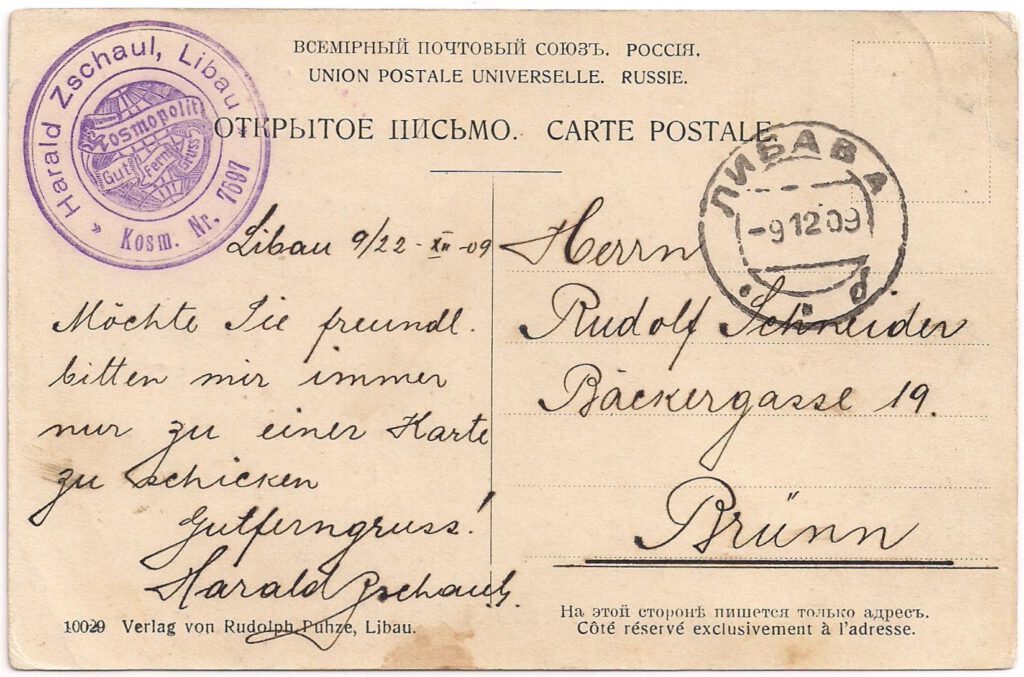
The stamp of the sender: a collector of cards. In the message he ask for cards in return. He is writing from Libau 9/22-xii-09: the different calenders. The Russian Empire used the old Julian calender to February 1918: for our calendar, which most countries also used in that period, 12 days must be added in the period after 28 February 1800 through 28 February 1900, and 13 days through 28 February 2100.


The card above is sent to Hamburg in Germany. The postal rate, 4 kopecks. From May 20, 1879 (2th U.P.U.congress) the rate for cards inland and abroad was the same: 3 kopecks. With the bad financial situation of Russia nd the devaluation of the rouble the rate for cards to foreign countries is raised on March 8, 1889 (asiatic parts of Russia: Apreil 1 1889). The rate became 4 kopecks and so it remains to the First World War.
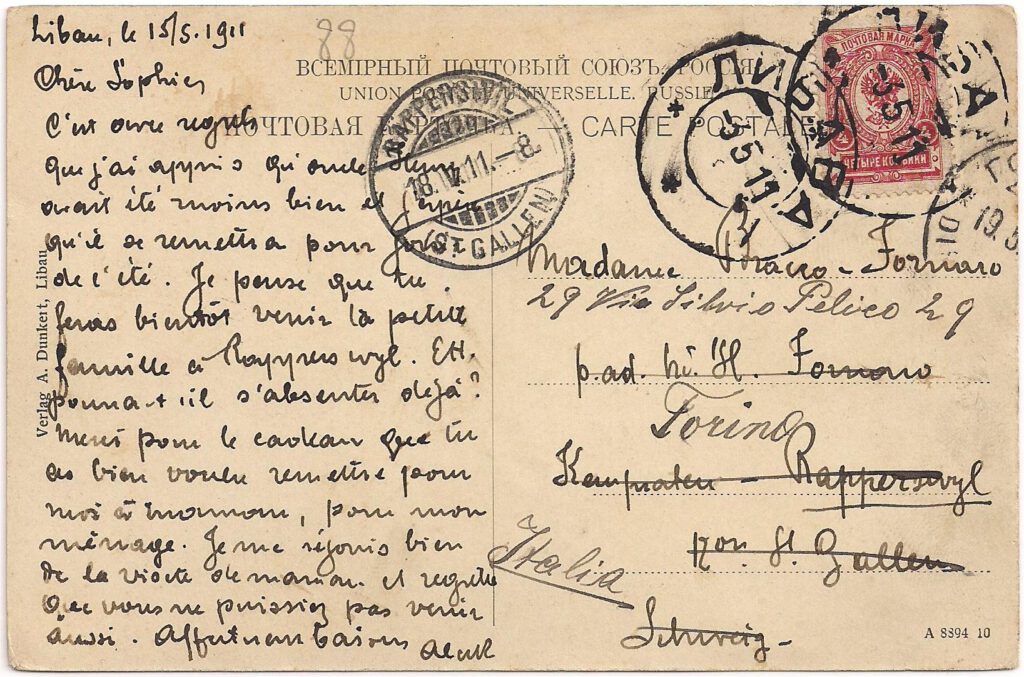
The picture side of the card above:
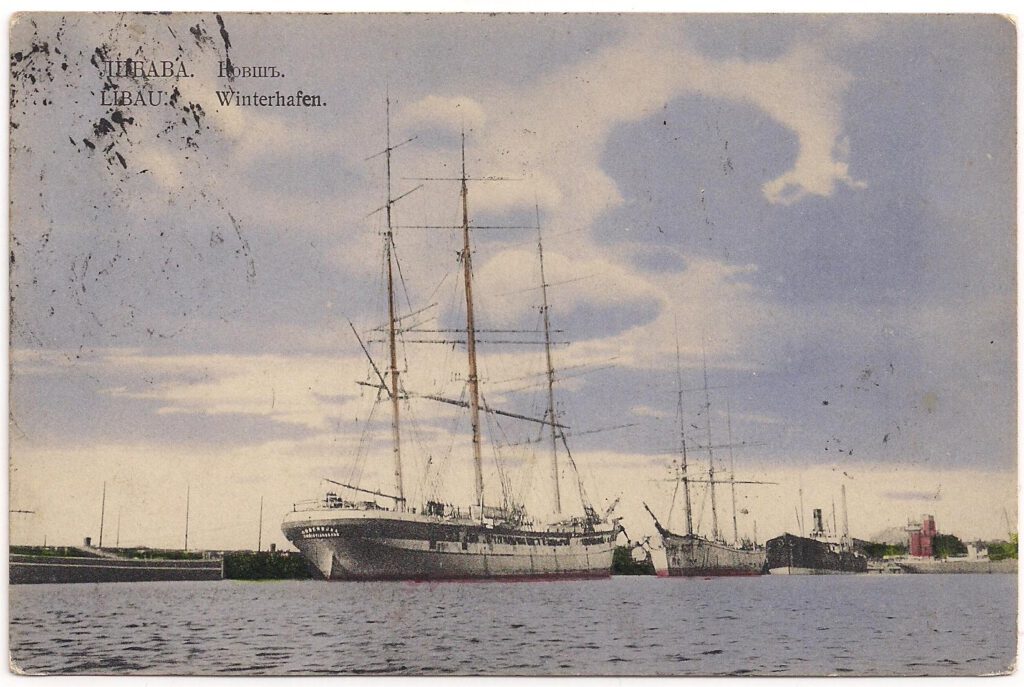
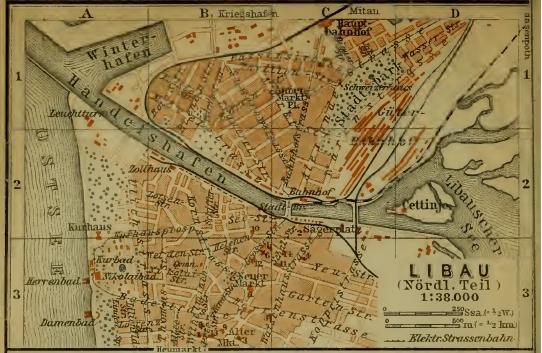
Map from the travel guide Baedeker 1914. In this guide -chapter From Berlin to Riga, b. via Koshedari and Mitau- Liepā (Libau) is also described:
“Libau, being the N. terminus of the Romni & Libau railway, which opens a wide ‘Hinterland’, is the chief port and commercial town of Courland, containing 90,000 inhab.; it lies at the point where the Lake of Libau (17 sq. M. in area) discharges into the Baltic sea through a channel dug in 1703. The chief exports are… To the N. of the town is the fortified ‘Naval Harbour of Emperor Alexander III. (no admission) with the Greek Catholic Marine Cathedral, consecrated in 1903.”
About this Harbour, with own postoffice: see Liepāja Kara Osta